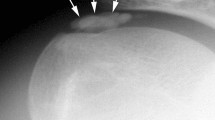Abstract:
We performed gold chloride staining of coracoacromial ligaments removed at operation, observed the peripheral nerve endings in the ligament, and studied their distribution and changes with aging in order to clarify the proprioception of the shoulder joint. The coracoacromial ligament was found to contain four types of typical nerve endings: Pacinian corpuscles, Ruffini receptors, Golgi tendon organ-like receptors, and free nerve endings. In addition, non-typical Pacinian corpuscles and Ruffini receptors with non-typical morphology were present. There were also unclassifiable nerve endings with a morphology which did not fit any of the above categories. These typical, non-typical, and unclassifiable nerve endings were all widely distributed on the surface of the subacromial side at the insertion into the acromion and around the coracoid process in the ligament. Free nerve endings were found sporadically on the surface of the subacromial bursal side in the ligament. The resected coracoacromial ligaments (23 specimens) were divided into two groups based on the disorder that required surgery: a fracture group without subacromial impingement (5 specimens) and a group with subacromial impingement (18 specimens). Age-related changes in the number of nerve endings were compared in each group. The total number of nerve endings decreased with age in both groups. The number of Pacinian corpuscles, Ruffini receptors, Golgi tendon organ-like receptors, and free nerve endings of typical morphology tended to decrease with age. The data from the fracture and subacromial impingement groups were not analyzed statistically because of the difference in the number of specimens in each group. However, the total number of nerve endings was lower in the subacromial impingement group than in the fracture group at all ages. The typical nerve endings of the coracoacromial ligament in both groups tended to decrease in the elderly, suggesting that the proprioception of the shoulder joint may become impaired with aging.
Similar content being viewed by others
Author information
Authors and Affiliations
Additional information
Received for publication on June 16, 1997; accepted on Oct. 14, 1997
About this article
Cite this article
Morisawa, Y. Morphological study of mechanoreceptors on the coracoacromial ligament. J Orthop Sci 3, 102–110 (1998). https://doi.org/10.1007/s007760050029
Issue Date:
DOI: https://doi.org/10.1007/s007760050029




